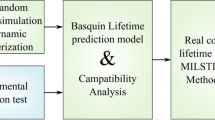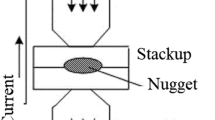Abstract
Deep learning technology has been more and more used in traffic flow prediction, weather prediction, mechanical system fault diagnosis and other fields, and has achieved good results through engineering verification. In this paper, a method of Surface Mounted Technology (SMT) solder joint morphology and reliability prediction based on Gated Recurrent Unit (GRU) neural network is proposed using deep learning as a theoretical guide. Firstly, a large amount of data is obtained by combining finite element simulation and experiment. Then, the three main parameters (peak temperature, cooling rate and solder paste thickness) in welding process are taken as the input characteristics of neural network, and the three main shape parameters (solder joint thickness, solder joint climbing width and solder joint climbing height) after solder joint formation are taken as the output characteristics of neural network, and the shape prediction model of solder joint is established. Then, the reliability prediction model of solder joints is established by taking solder joint morphology parameters as the new input characteristics and the fatigue cycle limit times of solder joints under thermal cycle as the output of the neural network. Compared with the prediction model established by Recurrent Neural Network (RNN) and Long short-term Memory Networks (LSTM), the results show that GRU Neural Network can predict solder joint morphology and reliability more accurately. The training time of the model is also shorter. Through engineering verification, the proposed method has certain reference value for actual production.
Access this chapter
Tax calculation will be finalised at checkout
Purchases are for personal use only
Similar content being viewed by others
References
Hernández, L., Baladrón, C.: Artificial neural network for short-term load forecasting in distribution systems. Energies 7(3), 1576–1598 (2014)
Lin, W.M.: Particle swarm optimisation aided least-square support vector machine for load forecast with spikes. IET Gener. Transm. Distrib. 10(5), 1145–1153 (2016)
Tong, C., Li, J.: An efficient deep model for day-ahead electricity load forecasting with stacked denoising auto-encoders. J. Parallel Distrib. Comput. 117, 267–273 (2018)
Zhai, N.J.: Multivariate time series forecast in industrial process based on XGBoost and GRU. In: 9th Joint International Information Technology and Artificial Intelligence Conference, pp. 1397–1400. IEEE, Chongqing (2020)
Cui, J., et al.: State change trend prediction of aircraft pump source system based on GRU network. In: 39th Chinese Control Conference, pp. 2457–2460. IEEE, Shenyang (2020)
Peng, X.L.: Effect of solder voids in brazing on microwave signal transmission performance. In: 5th Asia International Symposium on Mechatronics, pp. 1–5. IEEE, Guilin (2015)
Tian, J., et al.: A key parameters interval estimation method of the gold ribbon interconnect structure for the electrical performance of microwave modules. In: 21st International Conference on Electronic Packaging Technology, pp. 1–5. IEEE, Guangzhou (2020)
Han, L., Wang, M.Z.: Construction machine pose prediction considering historical motions and activity attributes using gated recurrent unit (GRU). Autom. Constr. 121, 103444 (2021)
Pan, K., et al.: The effect of solder paste volume on solder joint shape and self-alignment of passive components. In: 70th Electronic Components and Technology Conference, pp. 1289–1297. IEEE, Lake Buena Vista (2020)
Acknowledgements
This work was supported by National Key Basic Research and Development Program, National Natural Science Foundation of China under No. 51975447 and U1737211, Youth Innovation Team of Shaanxi Universities under No. 201926.
Author information
Authors and Affiliations
Corresponding authors
Editor information
Editors and Affiliations
Rights and permissions
Copyright information
© 2022 Science Press
About this paper
Cite this paper
**g, W. et al. (2022). Fast Prediction Method of SMT Solder Joint Shape and Reliability Based on Gated Recurrent Unit (GRU). In: Duan, B., Umeda, K., Kim, Cw. (eds) Proceedings of the Eighth Asia International Symposium on Mechatronics. Lecture Notes in Electrical Engineering, vol 885. Springer, Singapore. https://doi.org/10.1007/978-981-19-1309-9_129
Download citation
DOI: https://doi.org/10.1007/978-981-19-1309-9_129
Published:
Publisher Name: Springer, Singapore
Print ISBN: 978-981-19-1308-2
Online ISBN: 978-981-19-1309-9
eBook Packages: Intelligent Technologies and RoboticsIntelligent Technologies and Robotics (R0)




